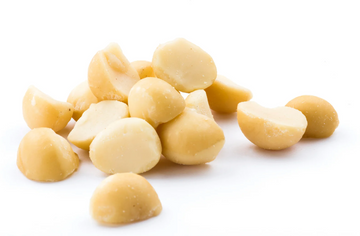In an era where sustainable solutions are paramount, macadamia shells have emerged as an unexpected hero in the fight against environmental degradation and economic inequality. These seemingly humble byproducts of the global macadamia industry are revolutionizing multiple sectors, from sustainable energy production to innovative material science applications, demonstrating the remarkable potential of agricultural waste transformation.
As you explore this comprehensive analysis, you'll discover how macadamia shells are reshaping industries and creating new opportunities for sustainable development. From their unique physical properties to their promising economic impact, understanding the full potential of macadamia shells is crucial for anyone interested in sustainable innovation, environmental conservation, or agricultural waste management. Let's delve into the fascinating world of macadamia shell applications and their transformative potential.
Physical Properties and Composition
Macadamia shells possess remarkable structural characteristics that set them apart from other agricultural byproducts. Unlike traditional wooden materials, these shells exhibit exceptional isotropy and homogeneity, featuring randomly oriented 3D cells that contribute to their outstanding mechanical properties. The shell matrix consists of a solid cellular material with a density higher than water, complemented by both primary fibers randomly distributed throughout the volume and secondary fibers running between specific points of the shell structure.
Research conducted at the Politecnico di Torino has revealed that macadamia shells demonstrate mechanical properties comparable to aluminum alloys, with stress-to-failure rates reaching up to 100 MPa for certain varieties. This exceptional strength is attributed to their unique cellular structure and fiber composition.
Industrial Applications and Sustainable Solutions
The versatility of macadamia shells has led to their adoption across various industrial applications, with particularly promising results in sustainable energy production. Companies like Pyrocal have developed sophisticated biochar production systems that transform these shells into valuable carbon-rich materials, while organizations such as Shisa Eco-briquettes are utilizing them to create efficient, clean-burning fuel alternatives.
In the construction and materials sector, macadamia shells are being incorporated into innovative composite materials, demonstrating potential as reinforcement in polymer matrices and as components in building materials. Research has shown that these shell-based composites can offer competitive mechanical properties while reducing the environmental impact of traditional materials. The shells' high carbon content and unique structural properties make them particularly valuable in applications requiring durability and strength.
Beyond energy and construction, macadamia shells are finding applications in water filtration systems, medical charcoal production, and even cosmetic products. The medical industry has particularly benefited from shell-derived activated carbon, which has proven effective in hospital treatments for poisoning, while the cosmetic industry has begun incorporating shell-based exfoliants and other derivatives into their product lines.
Environmental Impact and Carbon Reduction
Macadamia shell utilization represents a significant opportunity for carbon emission reduction and environmental preservation. Through their transformation into biochar and fuel briquettes, these shells help prevent more than 2 billion tons of annual carbon dioxide emissions from forest degradation. The shells' high carbon content (approximately 85%) makes them particularly effective in carbon sequestration when converted to biochar, providing a long-term carbon storage solution.
The environmental benefits extend beyond carbon sequestration. By providing an alternative to traditional wood and charcoal burning methods, macadamia shell products help combat deforestation, particularly in developing regions where wood fuel remains a primary energy source.
In South Africa, the world's largest macadamia producer, shell recycling programs have demonstrated significant success in reducing agricultural waste while providing sustainable fuel alternatives.
The shells' role in water conservation and soil improvement cannot be overlooked. When converted to biochar, macadamia shells create a highly porous material that enhances soil water retention and promotes healthy microbiome development. This application has proved particularly valuable in agricultural regions facing water scarcity and soil degradation challenges.
Economic Benefits and Market Opportunities
The macadamia shell industry has emerged as a significant driver of economic development, particularly in rural communities. Companies like Eyoh Alder Ventures in Kenya and Green Bio Energy in Uganda have demonstrated how shell processing can create sustainable employment opportunities while addressing local energy needs. These enterprises have been particularly successful in empowering women entrepreneurs, with organizations like The Charcoal Project supporting over 200 women in the clean burning technologies sector.
From a consumer perspective, macadamia shell products offer compelling economic advantages. Briquettes and other shell-derived products typically cost 20-40% less than traditional alternatives, making them an attractive option for cost-conscious consumers. This price advantage, combined with their performance characteristics, has helped drive market adoption and create sustainable business opportunities throughout the value chain.
Health and Safety Considerations
The health benefits of transitioning to macadamia shell-based products are substantial, particularly in regions where traditional cooking fuels pose significant health risks. According to the World Health Organization's 2022 report, nearly 2.5 billion people lack access to clean cooking materials, leading to increased rates of cancer, stroke, and chronic lung disease, particularly among women and children in low- and middle-income countries.
Macadamia shell briquettes offer a healthier alternative to traditional cooking fuels, producing minimal smoke and soot during combustion. This characteristic not only improves indoor air quality but also reduces the health care burden on families and communities. The reduced exposure to harmful emissions has shown promising results in decreasing respiratory illness rates in communities that have adopted these alternative fuel sources.
Future Prospects and Research Directions
The future of macadamia shell utilization holds immense promise, with ongoing research revealing new potential applications. Advanced material science studies are exploring the shells' potential in nanotechnology, electronics, and advanced composite materials, suggesting even broader applications in high-tech industries.
Emerging technologies in biochar production and activation processes are continuously improving the efficiency and scalability of shell processing. These developments are making it increasingly feasible to implement large-scale shell utilization programs, potentially transforming waste management practices in macadamia-producing regions worldwide.
The integration of macadamia shell processing into circular economy models represents a significant opportunity for sustainable development. As governments and industries increasingly prioritize waste reduction and sustainable resource utilization, macadamia shells are positioned to play a crucial role in future environmental and economic strategies. Research institutions and industry partners continue to explore new applications and optimization techniques, suggesting that we have only begun to scratch the surface of this remarkable resource's potential.





